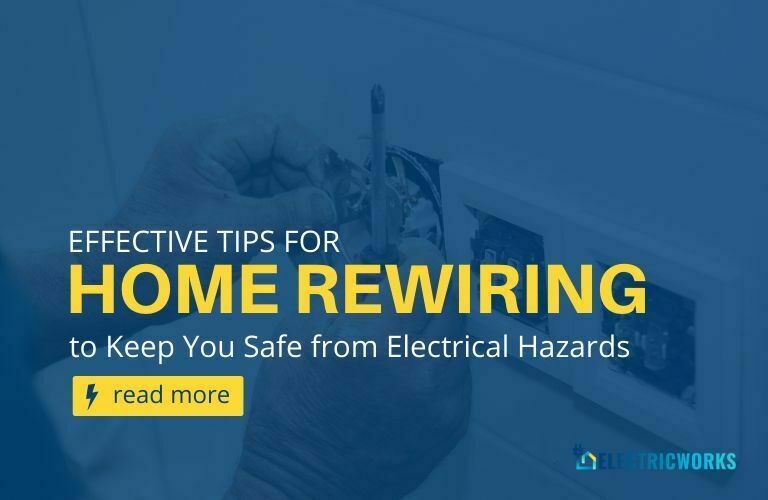
At some point of time or the other you have to take up the home rewiring project. If you do it yourself, instead of hiring a licensed electrician, you make a substantial saving. Electricity is potentially hazardous. Therefore, it is important you understand the basics of how electricity works so that you along with your family members stay safe during the project.
In the following sections of the blog post let us explore practical tips shared by licensed electricians in London on how to get a house rewired safely DIY.
Before starting the task of rewiring a house it is always important to take necessary precautions to ensure your safety. Choose tools that have rubber-insulated handles. Tools with such handles absorb electric shock instead of passing it to you. You also need a quality current tester for which you have to shell out descent amount of money. Wear the right clothing gear and do slip on necessary eye protection without fail. You must as well be cautious while climbing up and down a ladder or working in rafters.
Make sure to turn off the electric circuit before start working. You can either disconnect power from the main switch or only at the loop you are working on. After switching off the power connection you must check with the tester to make sure the electric line is dead and only then you should start your work.
Before you start an electric rewiring project assess your power consumption quantity. You can do this easily by going through or evaluating the existing lighting and outlets. While running this evaluation, you can easily make the necessary updates on the wiring. Note down points like whether the electrical box is too old and needs to be replaced. Electric rewiring provides a great opportunity to add new wires or cables to your circuit. But it is crucial to ensure any additions that you make do not exceed the country code and make research on the required permits.
Professional electricians experienced in rewiring houses across London have something important to share. It is a good idea to start the rewiring task only after a certified electrician takes a look around your house to evaluate the existing wiring. Just because the wiring has survived over the years, it does not mean you have to replace it completely. Rather the professional evaluation helps you pinpoint the problem areas. This is how your effort, budget and time in rewiring home are likely to get truncated while ensuring greater value of money for the existing wiring.
Unless you have launched a major home renovation, there is no need to completely replace the existing wiring system. Rather consider routing the wires through the attic. Take utmost precaution in drilling holes on walls or though cross beams because you may accidentally damage other electrical or plumbing lines in the process. If you are adding a new line that splits off to additional fixtures or new outlets, make sure to install a junction box to ensure electrical safety.
You have to lay the wires through walls and branch them to various electrical outlets. When you have a pair of hands attending the receiving end of wire layout the task becomes much easier. Consider stapling wires to nearby supporting beams. Before capping wires make use of electrical tape to wind them up together. Be careful to match up the wires including the ground one while installing light fixtures.
Qualified and registered electricians at Electric Works London suggest you must have sufficient wire while working on the breaker box. Make sure that you are connecting the right circuits to the right breaker box. Never forget to label the breakers on the go. If you do not label them immediately, chances are high you may jumble it up later. Test the system only after you are done with the wiring from an electric outlet to the relevant breaker box. Last but not the least, request a visit to the inspector before you cover up the access points.
Residential homes require wiring with 240 volts instead of 120 volts. This is because of powering large appliances including heating and cooling systems. What we call 240 volts circuits were known as 220 volt circuits before 1960. Similarly 110 volts circuits of yesteryears are now known as 120 volts circuits.
The 240 volts circuit feeds the main electric panel. It includes a set of 3 wires – 2 wires each carrying 120 volts while the third wire is called the neutral. Each or the wires carrying 120 volts runs 180 degrees out of phase with respect to the other. The neutral wire stays common to both the powered lines.
Electric current is measured in Amperes or amps. The amount of current is measured by dividing the Wattage (or watts) by Voltage or volts.
Your house rewire cost comes down substantially when you go DIY. However, you must be utmost careful and take the precautions we discussed above to stay safe from potentially dangerous electricity.